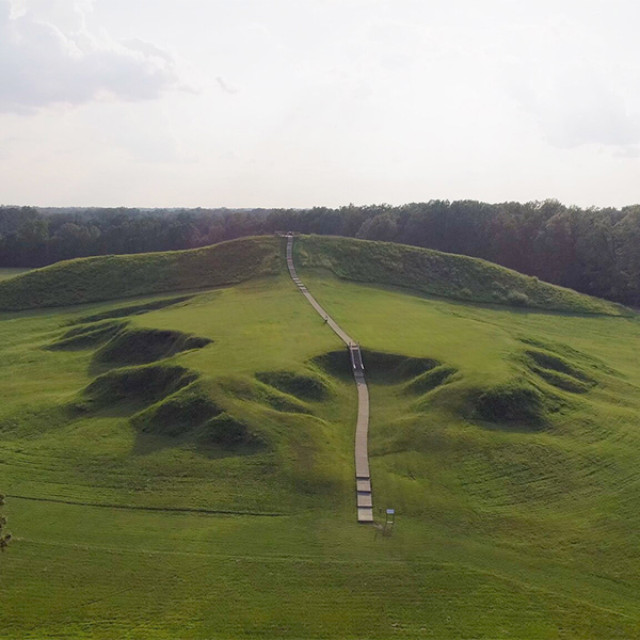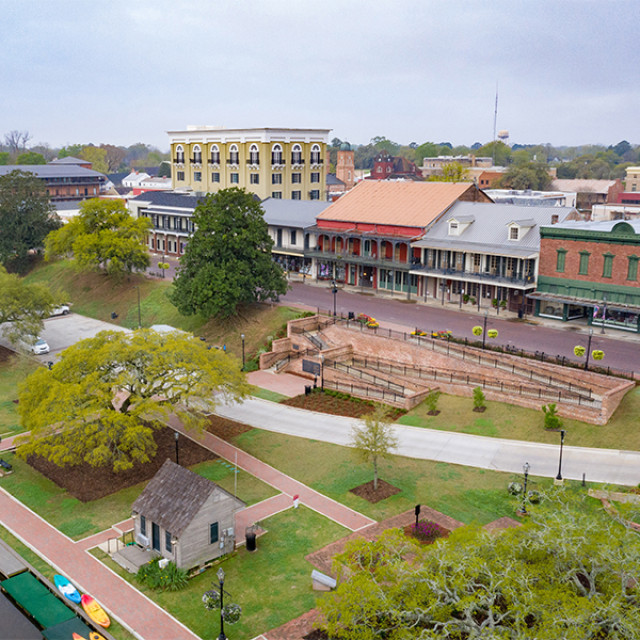_web72DPI-600x600_desktop.jpg)
Historic grounds on the Mississippi River
Drive less than an hour from New Orleans to Oak Alley, a former plantation in Vacherie that’s designated a National Historic Landmark. It’s recommended to spend over two hours to tour the premises including The Slavery at Oak Alley Exhibit, which focuses on the enslaved individuals forced to work and stay there. There’s more to reflect on at its Sugarcane Theatre and “Big House” Exhibit.
_Web72DPI-600x600_desktop.jpg)
Visit 38 official trail stops throughout the state
From jazz getting its start in New Orleans’ Congo Square to the first black governor in the nation taking office in Baton Rouge, retrace the footsteps of trailblazers at spots along the Louisiana African American Heritage Trail. Other stops include former plantations, churches, museums, markets, public spaces, state parks and universities.

Two can’t-miss attractions in one place
Listen to guides in period dress discuss the enslaved people of the once working sugarcane plantation at Houmas House and Gardens in Darrow. The adjacent Great River Road Museum shows what life along the lower Mississippi River was like, from interactions between Native American inhabitants and early settlers to battles fought on the mighty waterway.

The weeks-long extravaganza indulges all senses
Louisiana takes Mardi Gras or Carnival, the celebratory season leading up to Lent, very seriously. Nearly every community has its own celebration filled with music, art, king cake and parades with costumed revelers tossing beads. Nearly 70 parades roll through the New Orleans metro area alone, while every corner of the state celebrates the season in its own exuberant way.

Cajun culture on display to discover
Visit the Bayou Teche Museum to learn about the special blend of people, industries and lore of the snake-like waterways of southern Louisiana’s beautiful bayous. Located on Main Street in inviting downtown New Iberia, the museum preserves memorabilia and artifacts and hosts hands-on programs to educate generations to come.

Get ready to explore 3,400 years of history
Poverty Point in the northeastern corner of Louisiana, near Epps, is one of only 25 UNESCO World Heritage Sites in the USA. Walk trails throughout this archaeological wonder consisting of earthen mounds, raised ridges and a central plaza. Believed to have been a metropolis and commerce hub for the Native and nomadic peoples of the area, the settlement was abandoned under mysterious circumstances.

Over 200 historic structures in a lively town
Founded by the French in 1714, Natchitoches is the oldest permanent European settlement in present day Louisiana. Stroll 33 square blocks of its National Historic Landmark District, along both sides of Cane River Lake. Book a trolley or horse drawn buggy to take in the district from a different perspective.

Louisiana celebrates cultures, creatures and people
Mardi Gras is world famous, but don’t miss Louisiana’s lesser-known annual festivals like the Frog Festival in Rayne, the Louisiana Pirate Festival in Lake Charles, or Ponchatoula’s Strawberry Festival. The state’s food, music, culture and history inspire more than 400 festivals throughout the year. Multiple cities hold LGBTQ+ Pride celebrations every June too.